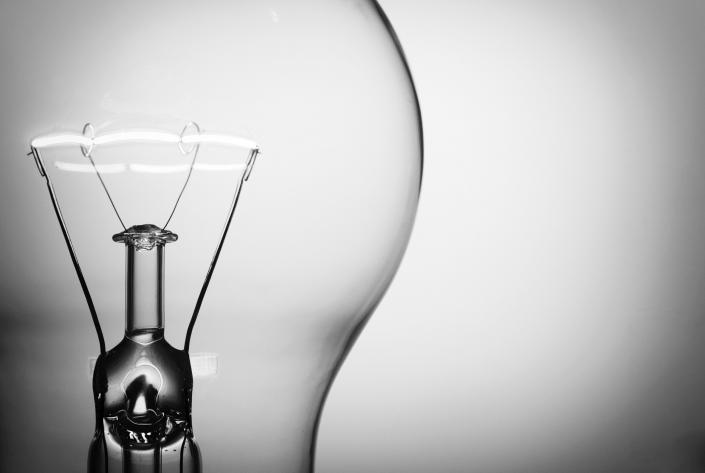Energy 101: How Power is Created, How We Use it, And What it Costs
By: Greg Haynes © 2017 Southeast Energy Storage
Did you know that the average Florida home uses 1,100 kWh per month? This figure translates to an average of 1.25kW per hour of energy usage. For residential households, the majority of this usage is concentrated into one to two periods per day depending on the season. In the winter, there are typically two periods per day when energy consumption is the highest, the morning between 7:00am-10:00am and the evening between 5:00-9:00pm. In the summer, the demand for energy grows all day and reaches its peak typically once in the evening between 6:00pm-10:00pm. This is primarily caused by air conditioners working to cool homes from the heat of the summer sun. In the energy industry, these are known as peak demand periods.
Peak demand periods drive the behavior of utilities because it is when the cost to deliver energy to our homes is the highest. The reason energy costs more to produce or acquire at different times of the day has to do with the age-old supply and demand curve as well as the economy of scale. As we know, energy has to be produced and delivered to our homes from power plants or renewable sources. Each source has a different cost associated with producing and delivering energy. Typically, coal fired power plants are large and expensive to manage but since these produce a high volume of energy and the cost of coal is relatively cheap, the cost per unit of energy produced is relatively low. A natural gas fired power plant has a much smaller footprint, has fewer moving parts, and burns cleaner so therefore needs less equipment to meet regulatory standards. In addition, the cost of the fuel it burns has fallen drastically. These factors have made natural gas power plants the resource of choice in recent years for most new power plants built. These plants serve a wide range of uses in supplying our energy needs. Some plants are large and produce a high volume of energy similar to the profile of a coal plant, and while these require less money to operate, the price of natural gas fluctuates broadly so their economy compared to coal can change daily.
Other types of natural gas power plants are much smaller and produce much less total energy but can increase or decrease output rapidly playing a key role and filling in the gaps when the larger, slower moving power plants can’t keep up with energy demand. While smaller, these units are relatively expensive to operate due to the technology used to make it perform its intended function. Renewables such as solar, wind, and hydro power are very different because these provide energy inexpensively but are very expensive to purchase and maintain compared to the total volume of energy produced.
Each of these sources of power serve an important role in diversifying power production because any one source alone is not sufficient for economic and reliable power production. We can think of the different types of power sources in a given area as a garage full of cars, one type of car for every need. With the different resources in mind that create the energy we need to power our homes, the next topic to understand is how the decisions are made to deploy those resources that will most effectively supply all energy required for a particular area. Despite the general consensus that utility companies charge too much for power, they are constantly focused on providing the most reliable economic power possible. Notice that I placed the word reliable first in that sentence, we will discuss the importance of it later. In order to do so, they need to ensure that the right mix of energy resources are deployed to meet the needs of the day. This is done by forecasting the demand of all customers in the area. On a mild spring day, those forecasts may suggest the need for fewer resources and can even choose the least expensive resources since customer demand is relatively easy to forecast when energy demands are low. On a blistering summer day with potential storms, it is more difficult to forecast the right amount of resources needed to supply the demand because of the total volume of energy needed as well as the variability that inclement weather can introduce into a forecast. To reliably supply all customer needs while not committing too many resources driving up the cost, energy employees may need not only the larger, slow moving energy production resources, but also the more expensive, high performance energy resources at the ready to make up any inconsistencies between supply and demand. We can see from these basic examples how it can be difficult to perfectly manage the needs of an entire area every day. That imperfection is normal but comes with a price.
Higher demand and greater volatility in the forecast creates additional costs to ensure reliable power production. This is where things get interesting. Even though the costs vary to deliver power to customers daily, even hourly, residential customers pay one set rate for the energy they consume. Whether you run a business or a household, it is easy to see that problems could arise if the costs to provide your service fluctuated, but the price you charge for your services, did not. One thing is certain in this model, we never pay exactly the right price to supply our needs. Now we get to the word reliable that I mentioned earlier. Utility companies are required to hold, above all else, the obligation of reliability as their primary focus. This requirement is handed down by the Federal Energy Regulatory Committee and adds to the cost to provide and consume power. We should be thankful for the requirement even though it adds cost to our energy bills. Think of all the times your internet or cable have gone out, your car not starting, or lawnmower acting up. If the energy we use constantly to power those devices or feed our families or keep the lights on was less reliable, our lives would be very different. Many foreign countries have poor regulatory environments around energy production, either too strict or too relaxed, and businesses and consumers pay the price for it. This inflexibility of price and the requirement to provide it reliably lead utilities to operate in the most conservative way which results in customers paying more for their energy than the actual cost to produce it. While our country’s energy policy may not be perfect, if you are reading this, chances are your laptop is charging, your air conditioner is on, and your kids are watching television. This, in a country where in 2016, we also saw the largest solar and renewable energy resource deployments in history while adding more jobs in those fields than oil and gas industry combined. That is to say, we are moving in the right direction.
Now that we are all experts on energy production in the United States, let’s move on to what changes are coming from your local utility. JEA will begin offering a program where, for the first time, residential customers can choose a plan that allows them to pay a variable rate for energy depending on how much is used. This program offers the flexibility that most customers can benefit from by changing how and when they consume the most electricity. The JEA Smart Savings program has a lower base rate of energy combined with two ‘demand charge’ rates that measure the peak energy usage in two different categories and charges you a premium for those peak usage times.
We can reduce your peak usage, you can lower your bill. We can guarantee it!
On the surface, changing your energy consumption habits may seem like an easy task but actual study results show that most consumers struggle to make a meaningful change to their consumption profile. Most of us are too busy with life to remember to not start the dryer until the AC has switched off or only run the pool pump at night or not to blow-dry your hair while the oven is on. These are all real-world scenarios that could end up costing you more than what you are paying in your current energy bill.
This is the cool part.
By adding our energy storage system to your home, it will intelligently monitor your usage and supply additional stored power to your household when you need it most. To reduce or eliminate your peak demand charges.
Our energy storage system combines the latest in high performance, high capacity battery technology combined with smart monitoring systems to offset your consumption and even learn when you use the most power to anticipate future needs so your usage profile to the utility company is greatly reduced.
Our product allows you to participate in the JEA Smart Savings variable rate program and enjoy the benefits of a lower base rate from the utility company while avoiding the higher charges associated with peak demand.
Why would the utility let us offer this service? If you remember from our example, the utility company’s cost go up when they have trouble supplying enough power and can only charge one price for that power regardless of cost. So any customer or system that will reduce the energy demand in those costlier times is seen as a benefit even if it lowers a customer’s utility bill. This is where we come in.
We offer systems:
v As a stand-alone storage resource
v As a complement to solar installations
v As a complement to backup generators
v For Residential and Commercial customers


